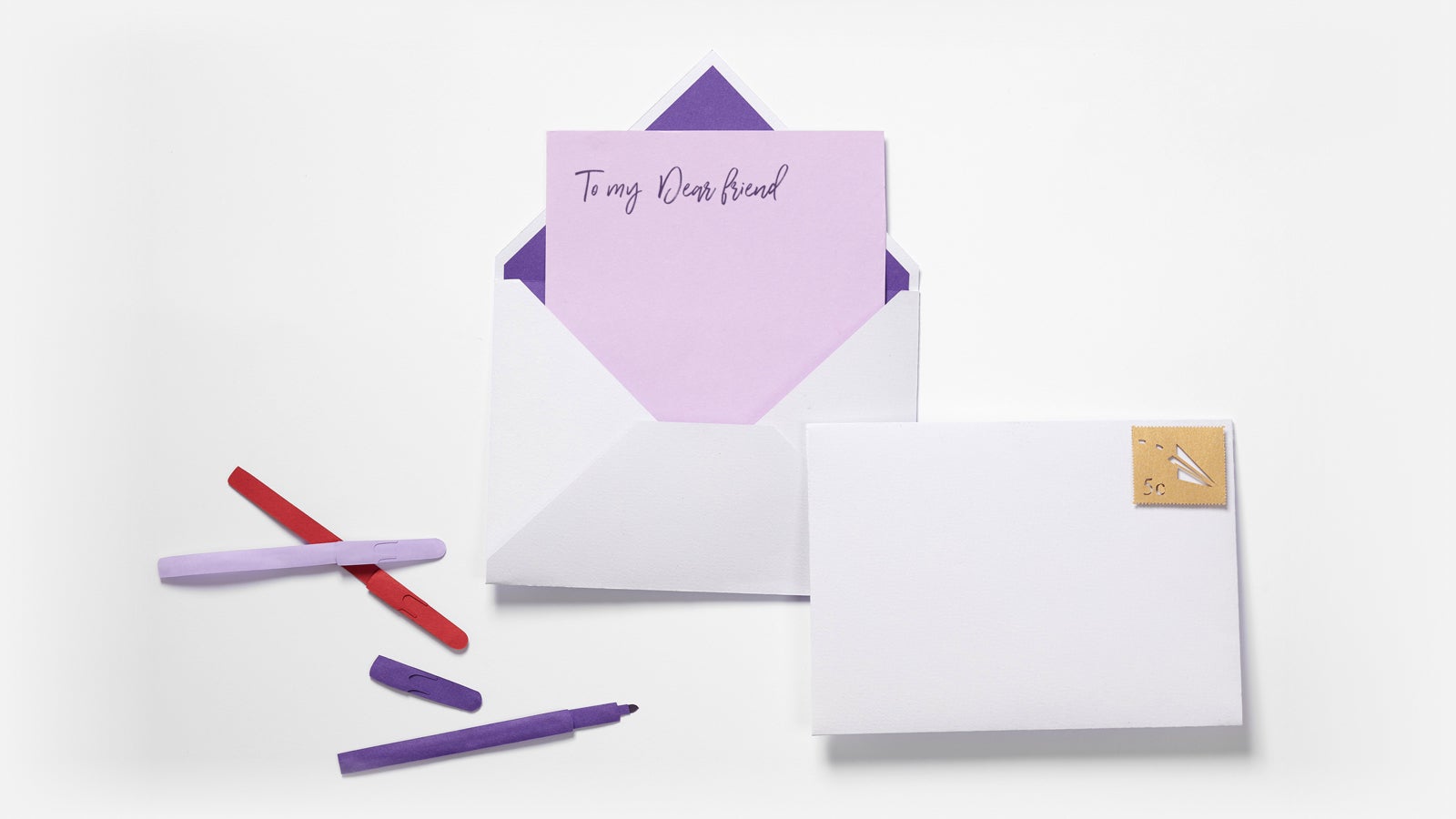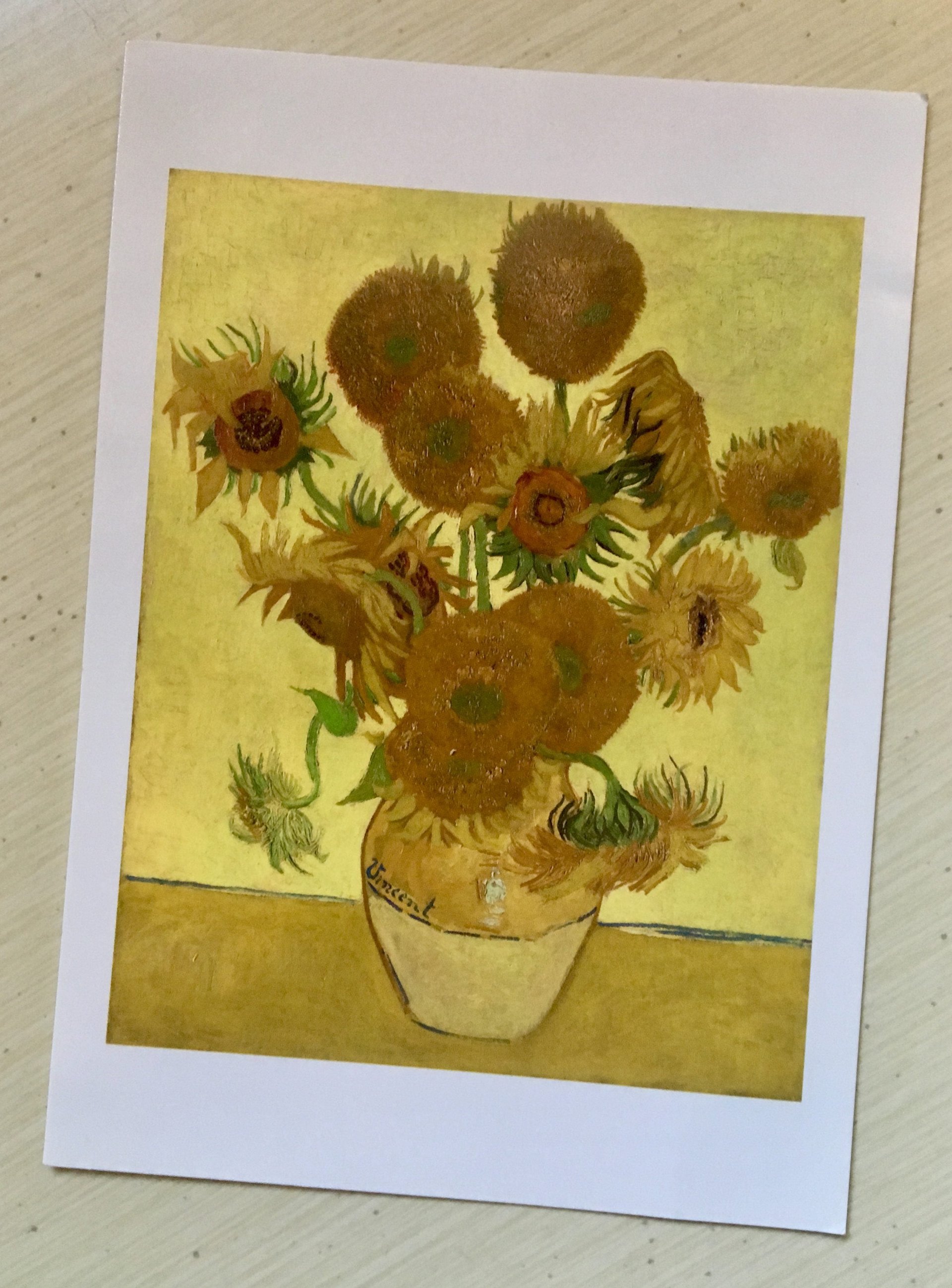How to write a love letter—a gift that never goes out of style
This story is part of our guide to five gift-giving philosophies to help you find the perfect gift.


This story is part of our guide to five gift-giving philosophies to help you find the perfect gift.
In my old bedroom in my parents’ home, there’s a postcard buried in the bedside table. Whenever I visit, I dig it up.
Van Gogh’s “Sunflowers” are on the front. The other side is filled with black ink: musings and metaphors from a long-distance teenage love. He had studied the painting in art history class, and was reminded of me, the warm glow of our relationship, and the torture of being apart.
My teenage self was bewitched. We don’t really talk anymore, the letter-writer and I, besides the occasional tipsy Facebook message. But eight years later, his postcard still makes me feel (if only momentarily) that I, despite my flaws, am somewhat majestic.

This addictive feeling drove me to begin writing long letters to loved ones on important occasions—a birthday, an anniversary, a new job or apartment.
They are love letters, all of them—but not in the traditionally romantic sense. Studies repeatedly prove that motivation and self-confidence are primarily driven by feeling valued and needed. Especially today, when disaster and discrimination feel increasingly rampant and inescapable, I see no better gift than helping a loved one love themselves.
Many have reciprocated the practice. Their letters, now hoarded in drawers throughout my apartment, are what I’d save in a fire.
“Leah Letters,” as my friends call them, aren’t complicated. I rarely buy stationery, and often use a sheet of printer paper and standard white envelope. If I’m feeling fancy, I write with a colored, felt-tip pen. These materials cost less than $5, and you probably already own them.
The letters themselves are not particularly poetic or painstakingly edited. I frequently cross-out and misspell words, and I rarely plan what I will write in advance. Instead, I think of the letter as a freestyle ode of sorts—an opportunity for raw reflection on the recipient’s most-admirable personality traits, and why those traits are so impactful.
Writing in a stream of consciousness, I cover one or both sides of the paper with sentiments I often think about this person—while we’re laughing over dumb TV, texting aimlessly, or sharing a good cry—but rarely say aloud.
These thoughts reveal who, at their core, this person is; what they value; in the past year, what have they accomplished and overcome; what have they taught me about the world, and how to behave in it; why I turn to them when I do; what goodness lies ahead for them; what wishes I hold for their future, and for our relationship.
These questions can provide guidelines for those less comfortable with letter writing. And taken together, the answers communicate a larger, more complex sentiment: This is why I love you.
At first, friends were surprised by the letters—I’m not a sentimental person, and kind of hate hugs. But they quickly became anticipated gifts, and an invaluable means of sustaining deep relationships, especially with friends I see and speak to less frequently.
“Today, paper letters are a rare form of connection and the purest form of intentional communication,” reflected one friend, to whom I regularly write. ”That rarity, combined with physically holding the letter, makes me feel like I’m truly seen and recognized by somebody else. I don’t think many people regularly receive that validation.”
One friend reflected that as she gets older, these long notes become more important. “God forbid if anything were to happen to one of my friends, it is amazing to have a card from that person expressing their gratitude,” she explained. ”While we may not realize it at the time, these long notes can have a lasting impact, even if a relationship ends.”
To be sure, material presents can be personal, but detailed letters communicate a simple and powerful message: I see you and I love you, as you are. The sunflower postcard ingrained this message on my insecure, teenage self. And it’s a message that no one, mature and self-assured as they may be, grows out of.